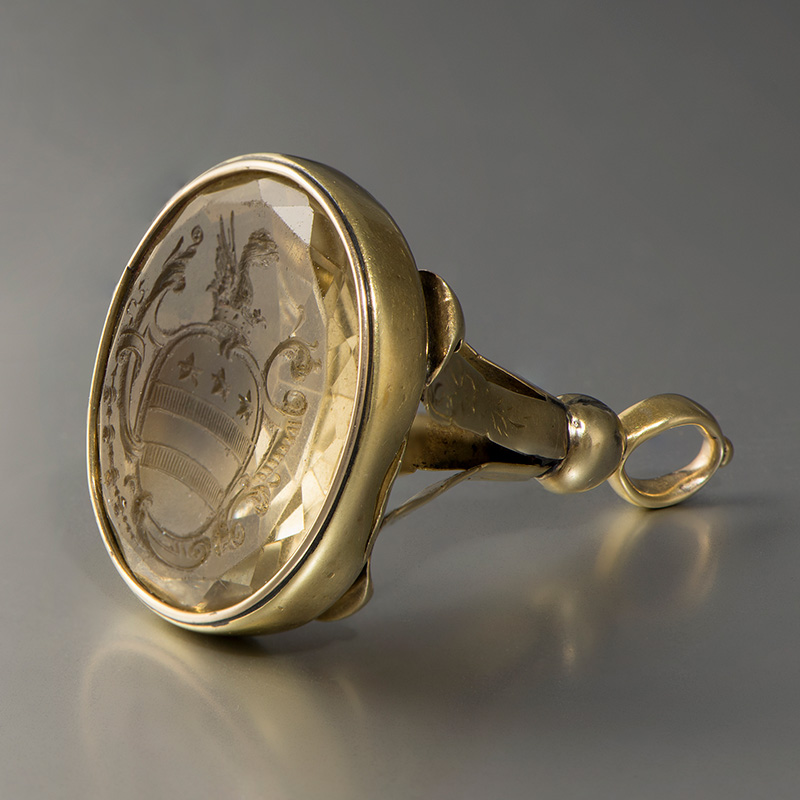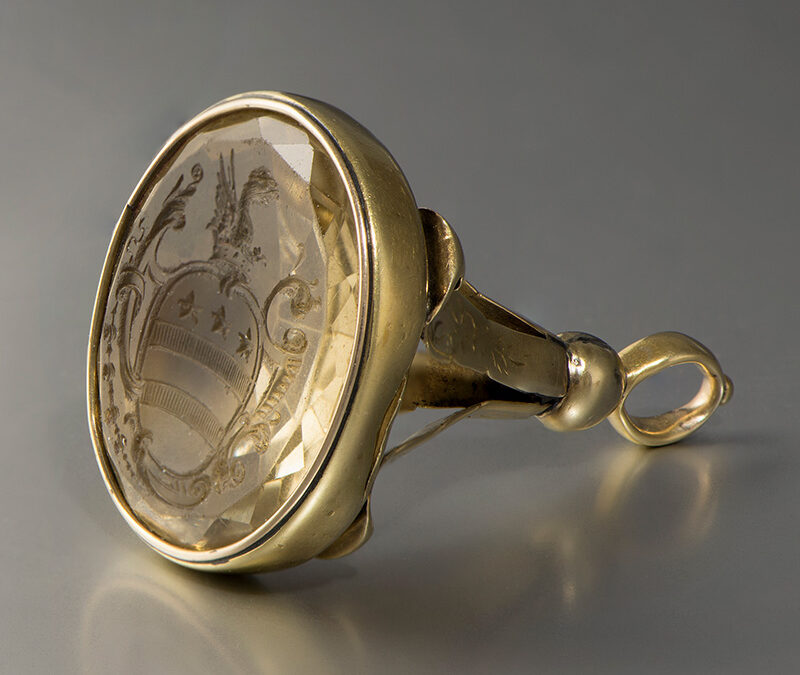
| Maker | Gold socket maker unknown, possibly James Craig; citrine engraved and set by Benjamin Gurden |
| Date of Creation | 1771 |
| Location | Probably Williamsburg, Virginia (gold socket) and London (citrine) |
| Materials | Gold, citrine |
| Institution | The Colonial Williamsburg Foundation |
| Credit Line | Gift of Mike and Carolyn McNamara |
| Accession Number | 2014-184 |
| Photo Credit | Colonial Williamsburg Foundation |
On July 18, 1771, George Washington wrote from Williamsburg to London ordering “a topaz or some other handsome stone fixed in the gold socket sent, with the Washington arms neatly engraved thereon.” The seal, depicted in Charles Willson Peale’s 1776 portrait of Washington, is one of the most personal items associated with our first president. Several other documents were sent along with the letter, including a lengthy list of the numerous goods he wanted the firm to procure on his behalf. A postscript was added below: “Note—the Watch Chain & Seal Sockets were given to Captn Peterson. G.W—n”. Captain Jacob Peterson regularly transported shipments of tobacco from Washington’s plantations to his London factors.
Numerous entries in Washington’s cash accounts, diary, and guardian accounts record payments from Washington to the Williamsburg silversmith James Craig, who is often listed as “Craik jeweller”. Most of these entries do not specify the items purchased or repaired, but it seems reasonable to assume that Craig may have been the source for the socket of the “topaz” seal. The design and fabrication of the gold socket do not reflect London work of the period but are more typical of “country work” of the colonies.
The following February, Captain James Page arrived in the Potomac River from London in command of The Trimley. He carried goods sent by Robert Cary & Company for George Washington, which included an order from Benjamin Gurden, wholesale jeweler at 114 Wood Street, London.
Cary’s invoice dated 3 December 1771 reads:
To a Topaz & engraving Coat of Arms on Do 2. 7 .6
To New Bezell & setting gold seal .10.
To a gold Seal wt. the Crest on Do 1.13.0 9
To repg gold Watch Chain & 3 New Swivels . . . 1. 3.0
This oval gold and citrine watch seal has a faceted edge, cut with the coat of arms of the Washington family in reverse within an asymmetrical cartouche with Rococo features, including a peanut-shaped cartouche or shield and foliate and shell mantling of the decorative surround. Although the political alliance between the colonies and Britain had begun to unravel at this stage, financial ties continued to bind planters such as Washington to their overseas business partners. As suggested by the aforementioned Peale portrait, Washington would continue to use this London-made seal throughout the Revolutionary War and beyond.

